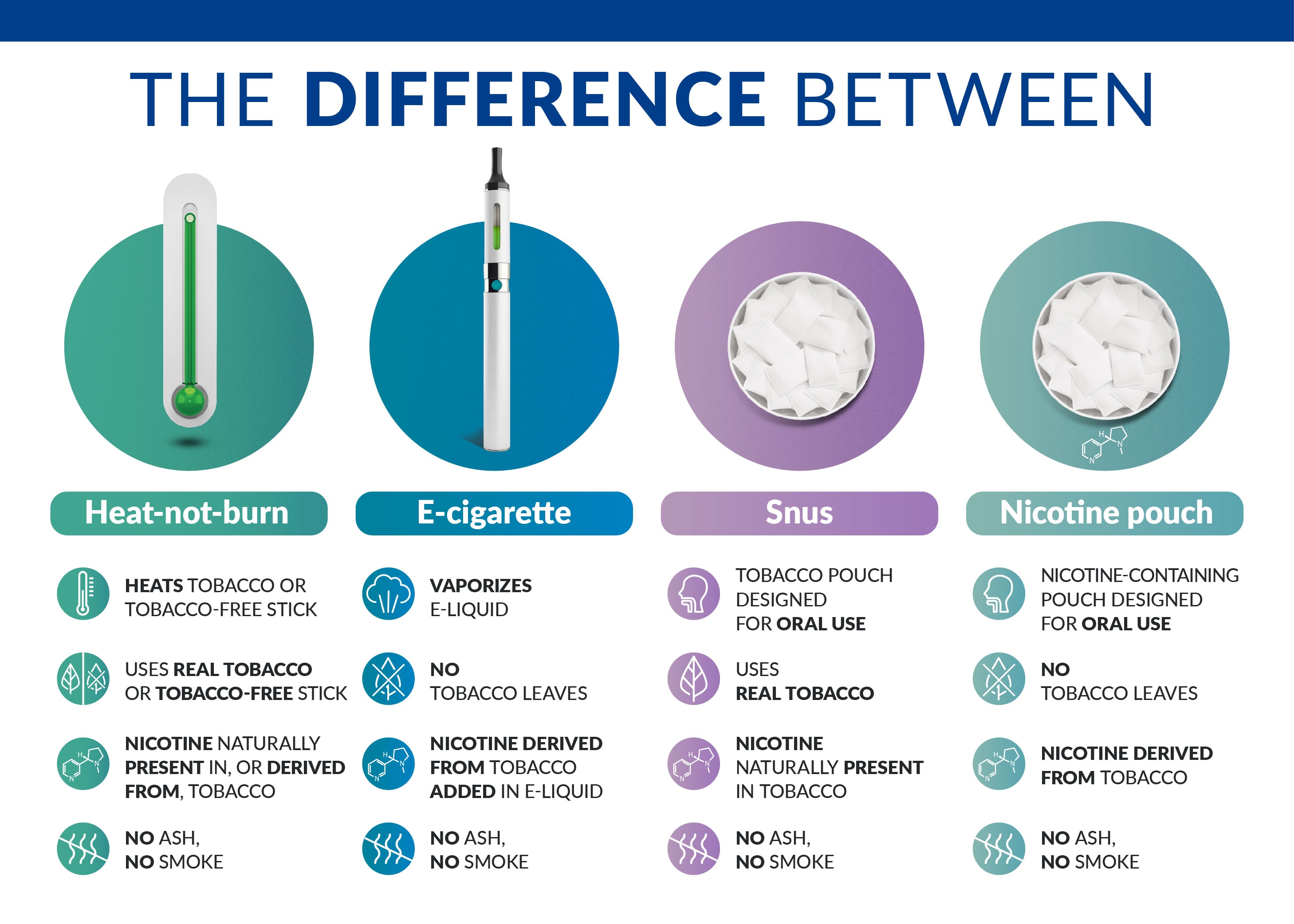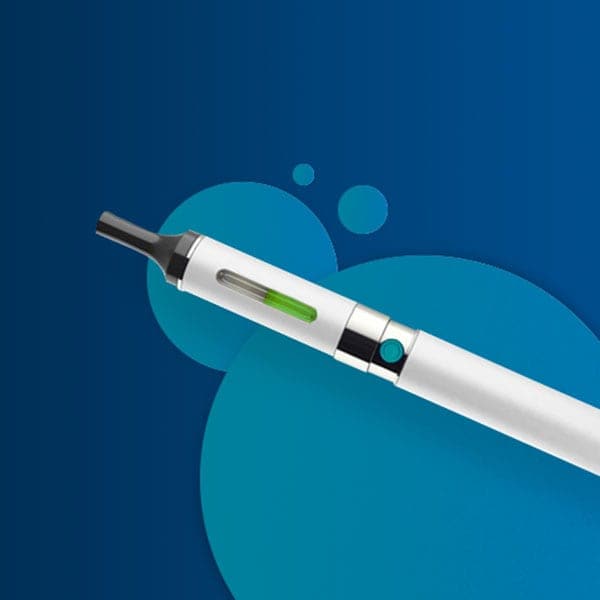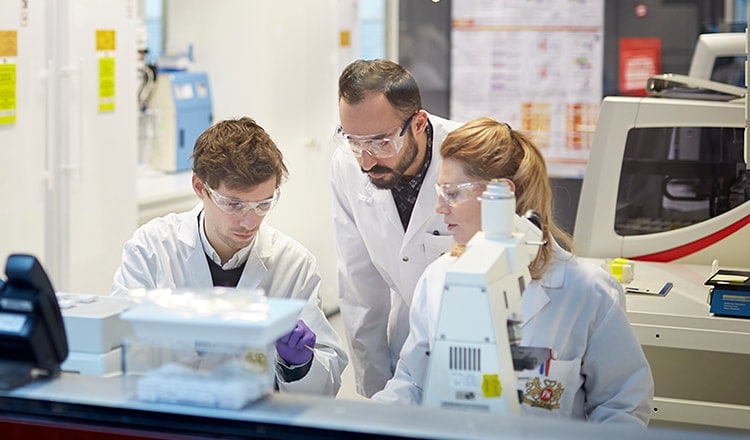Heated tobacco products (also known as heat-not-burn products) have already helped millions of adults around the world abandon cigarettes for good.
But, how much do you know about this relatively new category of smoke-free alternatives to smoking?
Whilst each device varies, here’s a general overview of how heated tobacco products work, and why—if scientifically substantiated—they have the potential to represent a better choice for adults who would otherwise continue to smoke.
Introducing heated tobacco products
1. What are heated tobacco products?
2. What types of heated tobacco products are available?
3. How do Philip Morris International’s (PMI’s) blade heated tobacco products work?
4. How
do PMI’s induction heated tobacco products work?
5. What are heated tobacco units?
Heated tobacco vs smoking
6. Do heated tobacco products burn tobacco?
7. How do I know that heated tobacco products are less harmful than smoking?
8. Heated tobacco products use tobacco. Aren’t they the same as cigarettes?
9. Do better alternatives to smoking carry a risk to users?
10. Are heated tobacco products better than continuing to smoke?
11. Do heated tobacco products emit smoke?
Heated tobacco and nicotine
12. Is nicotine the main cause of smoking-related diseases?
13. Why is nicotine present in heated tobacco products?
14. Does PMI add synthetic nicotine to its heated tobacco sticks?
What are heated tobacco products?
Heated tobacco products (HTPs), also known as heat-not-burn products, are usually electronic devices that heat tobacco without burning it to release a nicotine-containing aerosol, providing adults with an alternative to continued smoking. Most require tobacco sticks, which are inserted into the device by consumers, and are disposed of after use.
What types of heated tobacco products are available?
Heated tobacco products usually heat tobacco to release nicotine and flavors without burning. These products use a variety of different methods to do this. For example, some of PMI’s heat-not-burn products use a heating blade or pin which is pushed into the tobacco stick, while others use induction technology to heat the tobacco.
How do PMI’s blade heated tobacco products work?
PMI’s blade heated tobacco products contain a blade which the tobacco stick is pushed onto. The blade—which acts as a heater and temperature sensor—heats the tobacco enough to release nicotine and flavors without burning the tobacco.
How do PMI’s induction heated tobacco products work?
PMI’s induction heated tobacco products use special tobacco sticks with an internal heating element. When the stick is placed inside the product and it is turned on, an electric current flows through the coil in the holder. This creates a magnetic field that heats up the element inside the tobacco stick, which in turn heats the surrounding tobacco.
What are heated tobacco units?
Heated tobacco units (or HTPs, also known as tobacco sticks) are processed tobacco plugs designed for heating. The tobacco plug is made from tobacco leaves, which are ground and reconstituted into tobacco sheets, called cast-leaf. These sheets are then crimped and made into a tobacco plug.
PMI’s blade and induction heated tobacco products use different types of heated tobacco units, specially designed to be used with their corresponding device.
Tobacco-free units containing nicotine are also available, which can be used with some heat-not-burn devices.
You may have noticed a white cloud that comes from using a smoke-free alternative.
But is it the same as smoke?
The Simple Answer?
The simple answer is no.
Cigarette smoke and smoke-free product vapor are fundamentally different.
Let's take a look at what sets them apart.
Cigarette Smoke
Cigarette smoke is produced when tobacco is burned.
The smoke contains solid particles.
It also has high levels of harmful chemicals, many of which are considered the main cause of smoking related diseases.
Vapor
On the other hand, vapor is produced when a user activates a smoke free product like an e-cigarette or a heated tobacco device, by inhaling.
It's not smoke because there is no burning involved and it doesn't contain solid particles.
It should contain much lower levels of harmful chemicals compared to cigarette smoke.
Why does this matter?
Because recognizing the fundamental difference between cigarettes and smoke-free alternatives would be a significant step toward a future without cigarettes.
To find out more visit pmi.com/SmokeVsVapor.
Do heated tobacco products burn tobacco?
Unlike cigarettes, in a heated tobacco product, tobacco is not burned. Therefore, heated tobacco products can emit significantly fewer and lower levels of harmful and potentially harmful constituents compared to cigarette smoke.
The lack of combustion and the reduced formation of harmful chemicals should be substantiated on a product-by-product basis.
Are heated tobacco products less harmful than smoking?
Heated tobacco (also known are heat-not-burn) products aim to remove combustion of tobacco, the cause of most tobacco-related diseases. Therefore, if scientifically substantiated, they have the potential to represent a better choice than continuing to smoke.
PMI has accumulated extensive nonclinical and clinical data to support its heated tobacco products’ potential to reduce the risk of developing smoking-related diseases compared with continued smoking.
Heated tobacco products use tobacco. Aren’t they the same as cigarettes?
No, heated tobacco products are different from cigarettes. They usually heat tobacco within a specific temperature range, often using an electronic heat-control system to prevent it from burning. This means the user inhales tobacco vapor, but not smoke.
By eliminating burning, science-backed heated tobacco products—while addictive and not risk-free—can significantly reduce the levels of harmful chemicals compared with cigarette smoke.
Are heated tobacco products worse than cigarettes?
Heated tobacco products, if scientifically substantiated and regulated, can represent a much better choice than continuing to smoke because they avoid burning. But they contain nicotine—which is addictive—and are not risk-free. The best choice is always to quit products containing tobacco and nicotine completely.
Are heated tobacco products better than continuing to smoke?
Like e-cigarettes (also known as vapes), when heated tobacco products are scientifically substantiated and regulated to ensure quality and safety, they have the potential to be a much better choice than continued smoking because they do not burn the tobacco.

Do heated tobacco products emit smoke?
No, because these products heat tobacco rather than burning it, they do not give off smoke. What may appear to be “smoke” emitting from a heated tobacco product is actually an aerosol consisting of fine liquid particles, also known as vapor.
Is nicotine the main cause of smoking-related diseases?
No, although addictive and not risk-free, nicotine is not the main cause of smoking-related diseases, such as lung cancer, cardiovascular disease, and emphysema. These are caused primarily by inhaling high levels of harmful chemicals formed when tobacco is burned, such as in a cigarette.
Why is nicotine present in heated tobacco products?
Smoke-free products provide nicotine, as this is one of the characteristics—along with taste and ritual—adult smokers look for in better alternatives to cigarettes. If the nicotine was removed, adult smokers who would otherwise continue smoking would be far less likely to switch to these better alternatives.
Does PMI add synthetic nicotine to its heated tobacco sticks?
No, PMI does not add synthetic nicotine to its heated tobacco sticks. Nicotine is a natural component of tobacco, which is heated in PMI’s heated tobacco products.



-square-flipped.jpg)


